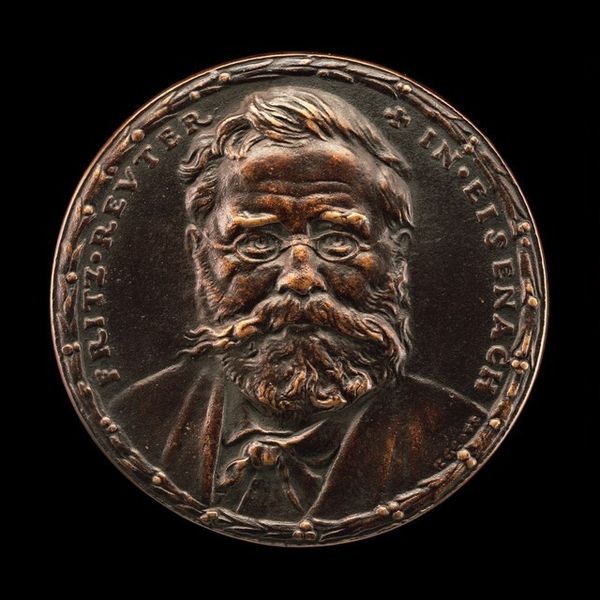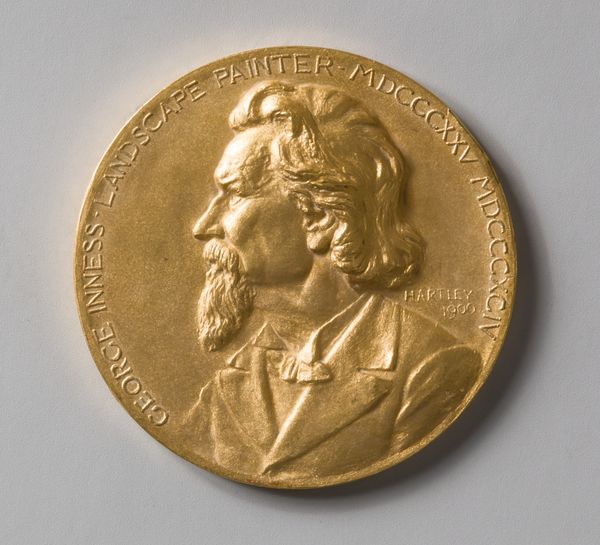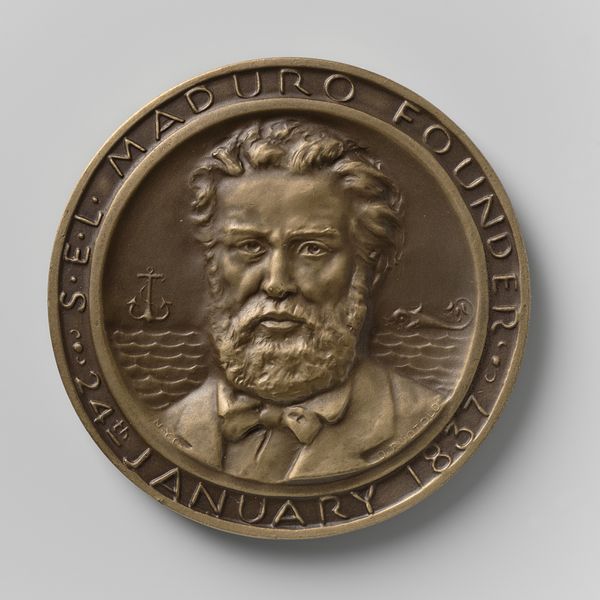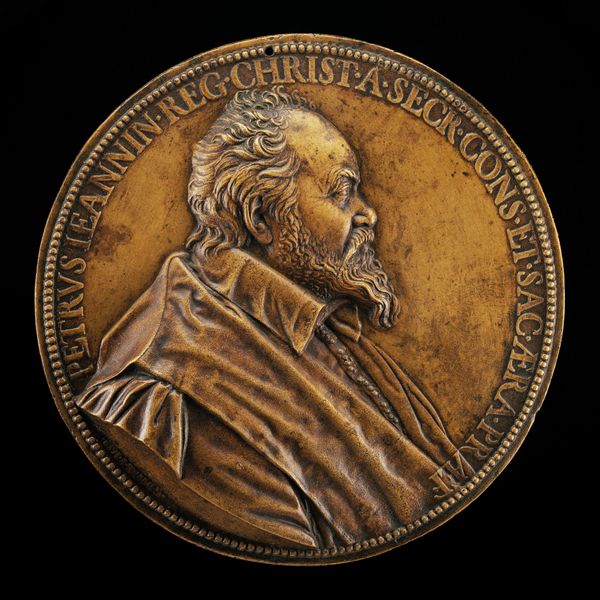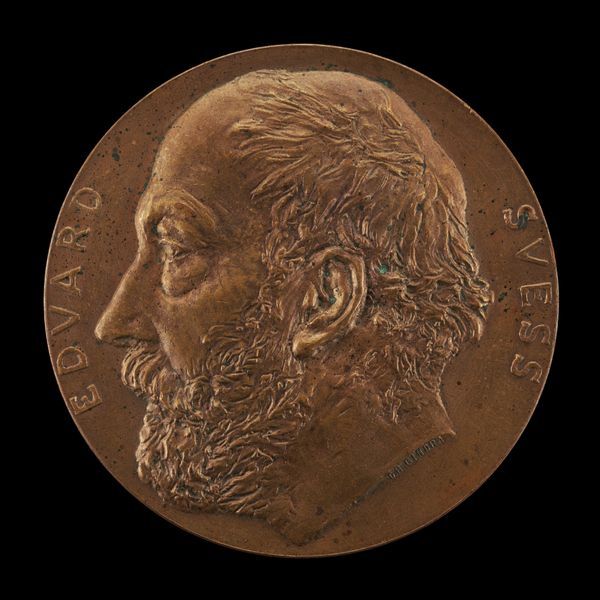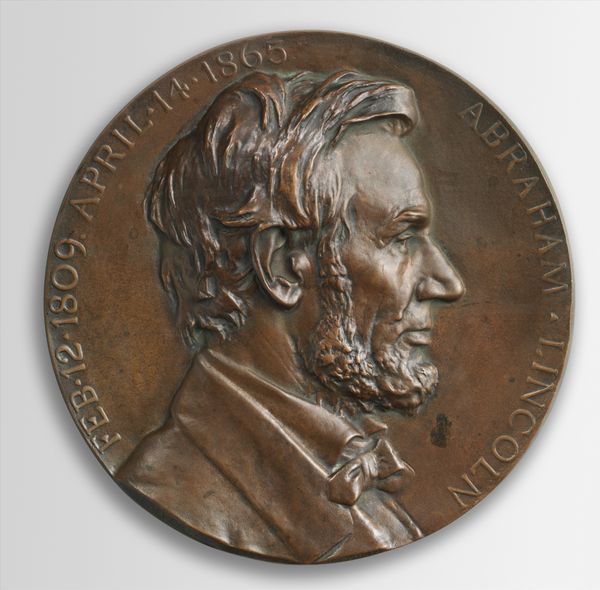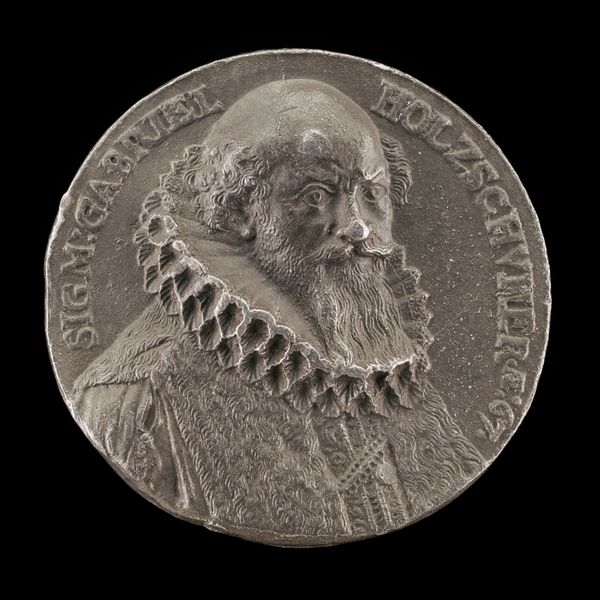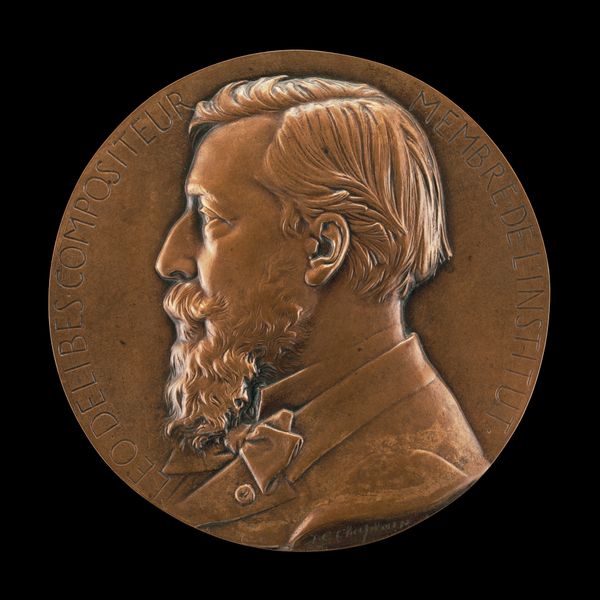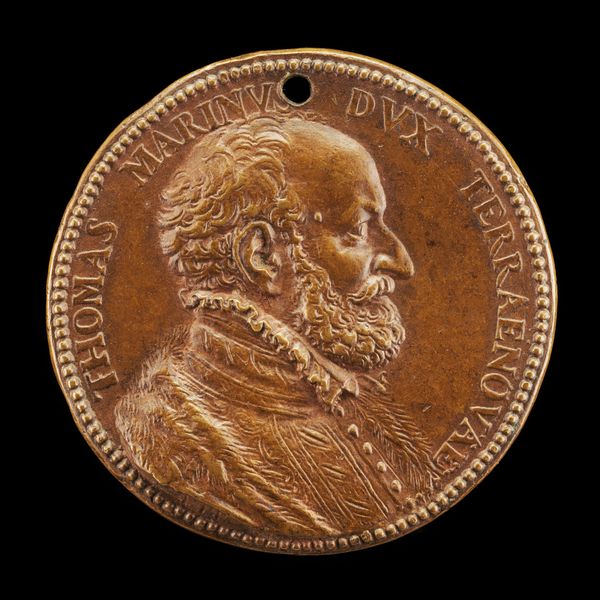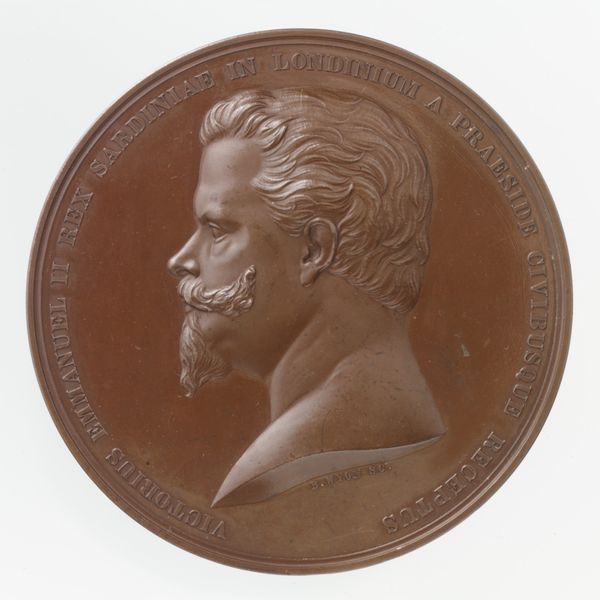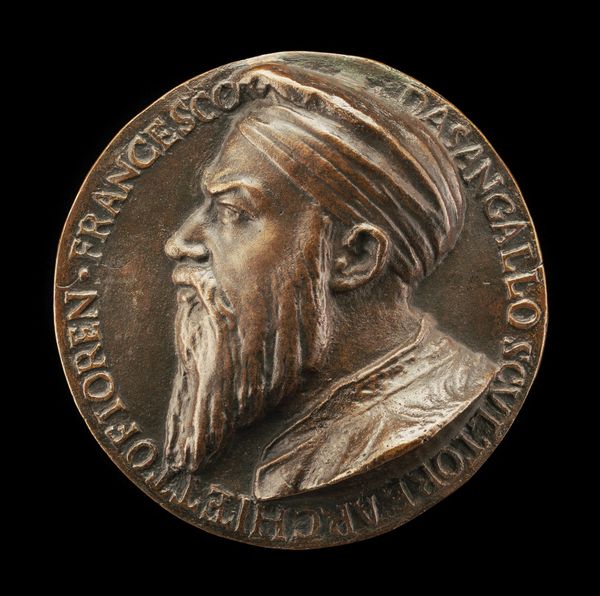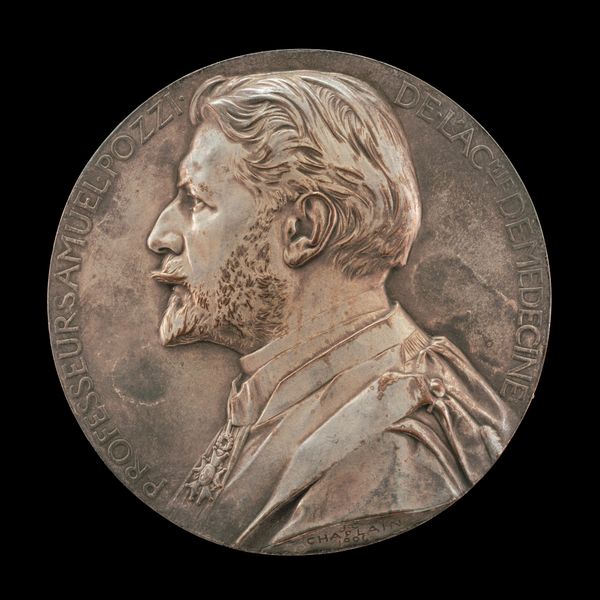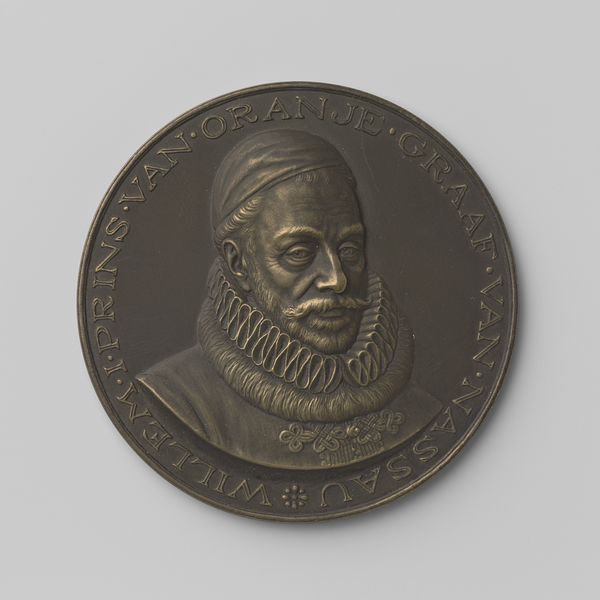
Dimensions: Diam. 6 7/8 in. (17.5 cm)
Copyright: Public Domain
Curator: This is a metal relief sculpture crafted by Charles Calverley, depicting James Russell Lowell, and it dates circa 1895-1896. Currently, this Neoclassical piece is located at the Metropolitan Museum of Art. What's your initial read of this sculptural medallion? Editor: It has a somber intensity. The bas-relief style and metallic medium lend themselves to a sense of permanence and gravity, as if the sculptor sought to memorialize not just the likeness, but also a substantial presence. The strong lines contribute to a weighty mood. Curator: Indeed. The circular form itself, often associated with commemorative medals, already gestures towards memorialization. Note also the inscriptions--Lowell's name curves along the upper edge of the disk, balanced by other latin text below. Consider how the added sprigs may reflect laurel wreaths as symbols of status, and the quote lifted from Ecclesiastes which may imply humility in wisdom? Editor: The inscription anchors the piece, giving linguistic weight to the visual form. However, what I find intriguing is how the material transforms the face itself. There’s a textural contrast between the smoothly rendered facial features and the rougher treatment of the beard and hair, highlighting both realism and the artist's touch. I see visual rhyme between the curve of the name above, and the laurel leaves that embrace his head as though Lowell himself becomes part of the landscape. Curator: Excellent observations. The very choice of a sculptural relief suggests an attempt to solidify Lowell’s cultural significance, his intellectual legacy etched into material form. Metal is associated with strength, longevity, and preciousness... All symbolic tools in shaping how viewers might understand the importance of this subject in posterity. Even with a still life the portrait seeks to speak beyond likeness and reflect values or aspirations. Editor: And yet, the three-dimensionality gives Lowell an active quality; He is more than just surface and ideal--we become active participants encountering a dimensional presence. Calverly achieves a very clever dance between representation, object, and memorial with the medium itself creating narrative! Curator: The Neoclassical elements merge here with early photographic portraiture influences; both shaping a legacy and the way future generations remember its figures. Editor: Yes, this dialogue between the subject's legacy and the artist's form transforms the medium itself. It gives us new perspective on Lowell’s identity as both intellectual and object.
Comments
No comments
Be the first to comment and join the conversation on the ultimate creative platform.
